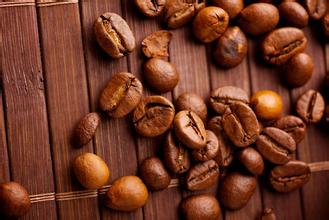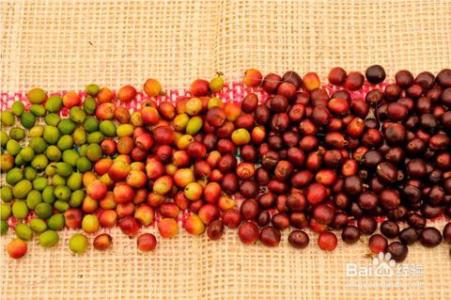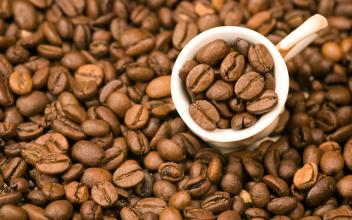The difference between sun-washed coffee beans and sun-washed coffee beans
Sun water honey washing treatment-the difference between sun-washed coffee beans and washed coffee beans
Honey treatment-remove the peel and pulp, but retain some or all of the pectin (honey).
Coffee bean washing treatment-peel, pulp and pectin are all washed off and fermented, also known as full water washing. This traditional way of handling Arabica coffee beans is still used in most countries. Others skip the fermentation step and use a high-pressure washing machine to separate the peel, pulp and pectin. This coffee treatment is called peeling and tanning.
Brazilian coffee fields are endless and are mostly harvested mechanically in order to meet the economic benefits. When 75% of the coffee fruit in the coffee garden turns red, mechanical harvesting is started, followed by the same pre-washing operation, which is moved into the sink to remove floating beans, sift out the sunken beans, and then use a large pulp screening machine to dig out the pulp and remove the pods covered with pectin. The next stage is separate from the washing method: the sticky pods do not need to be moved into the tank to ferment, but to the outdoor bean drying farm. Because of the dry climate in Brazil, the sticky pectin on the pods will harden in about a day or so. Then use a large number of manpower to turn up and down, so that the pods dry evenly inside and outside, so as not to return to moisture and stink. For about two to three days, with the help of the natural forces of sunlight and dry climate, the pods can achieve a certain degree of dehydration. Then further dry with a dryer, the water content is reduced to 10.5%, and the pods are stored in a special container for about 10 days to further mature, in order to stabilize the quality, remove sheep skins (pods) before export, remove coffee beans, and pack them in stages. The adhesion of the mucous membrane is very strong and is not easy to remove. It must be placed in the slot for about 18-36 hours to make it alcohol and decompose the mucous membrane. There are two methods of fermentation, namely wet hair alcohol and dry hair alcohol, as the name implies, the former adds water, the latter does not add water. In the process of producing alcohol, the seeds and internal pulp will produce special changes, which is one of the steps in the coffee bean washing method that most affects the coffee flavor. After washing, the coffee beans are still wrapped in the pericarp with a moisture content of 50%. It must be dried to reduce the moisture content to 12%, otherwise they will continue to be mellow, moldy and rotten. The better treatment is to use sunlight to dry, although it will take 1-3 weeks, but the flavor is very good and very popular. In addition, machine drying is used in some places, which greatly shortens the processing time and makes the flavor inferior to that of sun-dried coffee.

Important Notice :
前街咖啡 FrontStreet Coffee has moved to new addredd:
FrontStreet Coffee Address: 315,Donghua East Road,GuangZhou
Tel:020 38364473
- Prev

Introduction of Starbucks Coffee Bean Grinding scale Variety production area treatment method taste Manor
Starbucks coffee bean grinding scale variety production area treatment method taste manor introduction. The mocha pot is also divided into the upper seat and the lower seat. But cooking is much simpler than siphoning. Fill the lower seat with water. It can't be filled. Just fill it up to 8 points. Then put the cylindrical bucket in the lower seat. Put the coffee powder in the small cylinder. After putting it away. Cover the coffee powder with a piece of filter paper. Cover
- Next

Ratio of hand-washed coffee beans to water-ratio of freshly ground coffee beans to water
The ratio of hand-washed coffee beans to water-the ratio of freshly ground coffee beans to water saw that some friends said to buy coffee powder directly. I personally recommend that people in large and medium-sized cities should buy fresh coffee beans and grind them themselves. To make a good cup of coffee, the most fundamental thing is to have fresh and high-quality coffee beans; hand mill to buy better, can ensure that the coffee powder is uniform. Such as
Related
- Guji coffee producing area of Guji, Ethiopia: Humbela, Shakiso, Wulaga
- What is the most expensive variety of Qiloso in BOP multi-variety group?
- How to store the coffee beans bought home?
- Why are Yemeni coffee beans so rare now?
- Ethiopian Sidamo all Red Fruit Sun Sun Santa Vini Coffee beans
- SOE is mostly sour? What does it mean? Is it a single bean? what's the difference between it and Italian blending?
- Is Italian coffee beans suitable for making hand-brewed coffee?
- How to choose coffee beans when making cold coffee? What kind of coffee beans are suitable for making cold coffee?
- Just entered the pit to make coffee, what kind of coffee beans should be chosen?
- Can only Japan buy real Blue Mountain Coffee? What are authentic Jamaican Blue Mountain coffee beans?

